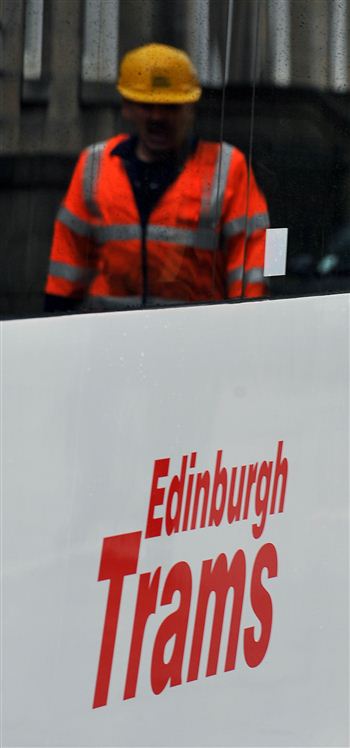RESIDENTS in Edinburgh have been exposed to twice the acceptable level of pollution set by the European Union, according to new figures from the city’s local authority.
Campaigners have blamed the capital’s tram project, which has led to a concentration of vehicles in the city’s residential streets, for soaring nitrogen dioxide emissions.
The City of Edinburgh Council admitted that concentrations of the toxic gas, which comes from exhausts, peaked at 93 microgrammes per cubic metre in the west end of Princes Street in December, dropping to 71 microgrammes in January, the most recent recording.
However, some local residents in Randolph Crescent, near to where the council takes samples, have carried out their own measurements.
They found that levels had peaked at 164 microgrammes per cubic metre in February – more than four times the acceptable level of 40 set by the EU.
Long-term exposure to nitrogen dioxide can lead to heart disease and worsen conditions like asthma, especially among children and elderly people.
They also found that the re-routing of traffic to residential areas led to an increase in noise pollution comparable with a helicopter hovering at 100-feet.
Ashley Lloyd, a physicist who has carried out his own monitoring, said that people living in ground floor or basement flats would be more severely affected by the gas.
He said: “The tall buildings throughout Edinburgh tend to trap pollution in urban canyons where it can settle into cellar areas.
“With bedrooms two or three levels below the level of the road where the council is monitoring, people can be exposed to these high levels of pollution throughout the night.”
TIE, the council-run firm set up to handle the tram project, has proposed a traffic regulation order to permanently close Shandwick Place to cars, at the west end of Princes Street, to traffic to allow the trams to run smoothly.
However, Mr Lloyd and other local residents have lodged an objection against the proposal, which they say would lead to traffic being re-routed through the nearby residential streets.
Mr Lloyd also measured the level of noise pollution on street level caused by the new traffic route.
He says he found that during the day noise levels rose to 70 decibels, the equivalent to standing next to a vacuum cleaner.
However, Mr Lloyd claims the that the level of noise peaked in February at 100-115 – the equivalent to standing 100ft below a hovering helicopter.
He said that he is not against the introduction of the tram system, but is urging the council to re-open Shandwick Place, the closure of which has already led to an extra 130 vehicles per hour.
Gordon Mackenzie, Edinburgh council’s transport convenor, said: “The proposed traffic regulation order [TRO] for Shandwick Place intends to close the street to all traffic except buses, taxis and cyclists once the tram route becomes operational.
“The TRO process entered a statutory public consultation period at the end of February and provided an opportunity for the public to lodge any objections.
“Any objections which were lodged will be thoroughly investigated before being presented to councillors for final consideration.”
The City of Edinburgh Council said it could not comment on an objection that was currently under consideration.


